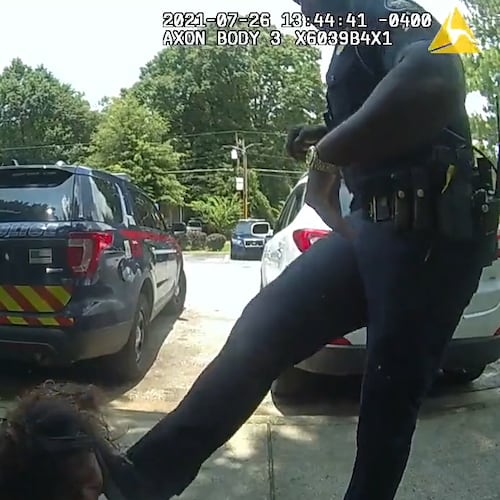The Federal Aviation Administration has tight restrictions on the operation of drones for commercial purposes.
Only about 300 exemption permits have been issued for commercial drones, including a handful in Georgia.
However, more permits are being issued each day. The FAA is also working to issue a final rule that would open up commercial use much more broadly for those who meet the requirements.
Companies displayed drones with applications for hundreds of different purposes earlier this month at the Unmanned Systems 2015 Conference at the Georgia World Congress Center, hosted by the Association for Unmanned Vehicle Systems International (AUVSI).
The association’s president, Brian Wynne, said the potential for drones is exploding.
“I think increasingly what we’re going to find is that these things are above us, and it’s very safe and reliable,” said Wynne. “They can frankly do things that create tremendous value for us as citizens and consumers.”
Once unmanned aircraft are integrated into the National Airspace System, AUVSI has forecast that within 10 years it will create $83 billion worth of economic activity and more than 100,000 jobs. In Georgia, that would translate to about 1,481 jobs and $280 million in economic impact by 2025, according to AUVSI.
Many people have heard about drones being used for military surveillance, as well as Amazon’s desire to use drones for package delivery. But there are many other surprising industries that drones could revolutionize. Among them:
Accident reconstruction
Drones can be used to capture images for accident reconstruction or aerial photographing of crime scenes. Ontario Police and Michigan State Police are already using drones for this purpose.
Utilities
Drones will be used by Southern Co., of which Georgia Power is a subsidiary, to inspect damage to power lines and perform routine power line inspections. They can also be used to survey areas for pipelines.
Mapping and infrastructure maintenance
Drones like the 3.7-pound quadcopter eXom commercial drone by senseFly are equipped with cameras for mapping and inspection of infrastructure, such as bridges and dams. There are 600,000 bridges in the United States alone that must be inspected every few years. The device can replace some, if not all, of the work performed by a human inspector by flying below a structure and using optical zoom to zero in on cracks and other potential defects.
Agriculture
Agriculture is one of the most promising areas for drone usage. They allow farmers to monitor crops from the sky, using various types of cameras and image-processing software to determine where fields need attention. Besides just counting plants, infrared and thermal cameras can monitor irrigation levels to determine if soil or plants are too dry or overwatered. Eventually larger drones can also be outfitted for crop-spraying. Agriculture and public safety constitute 90 percent of the known potential market for unmanned aircraft.
Real estate
Atlanta-area real estate company Sky Sight Imaging recently obtained one of just a handful of permits in Georgia from the FAA to operate a commercial drone for performing aerial real estate inspections. Company owner Richard Dobbins said he has two drones, which he will begin using to provide overhead images of foreclosed and other properties to potential investors.
About the Author
The Latest
Featured

